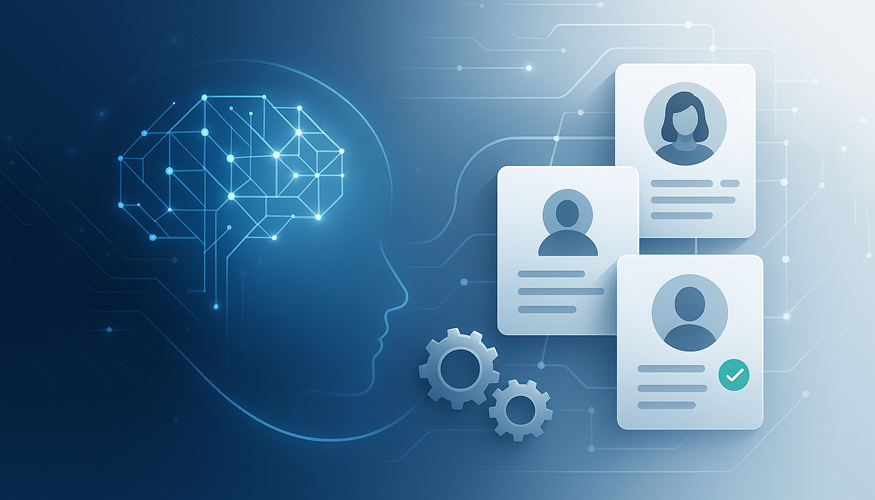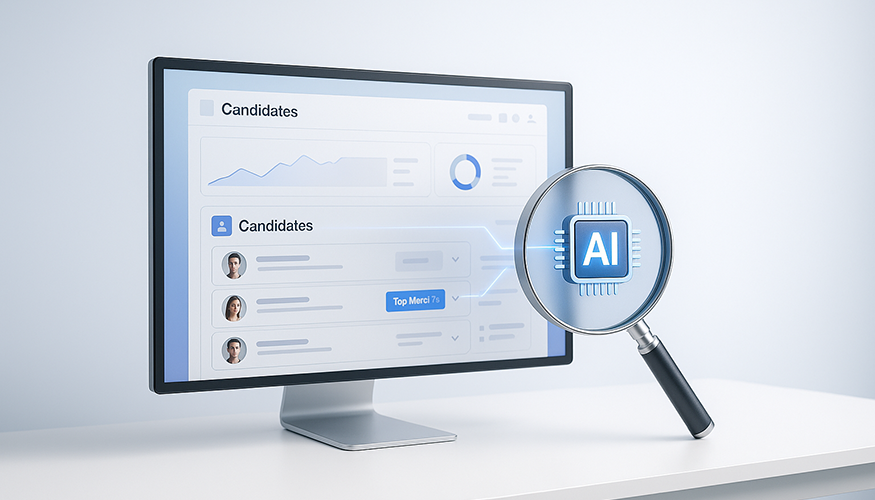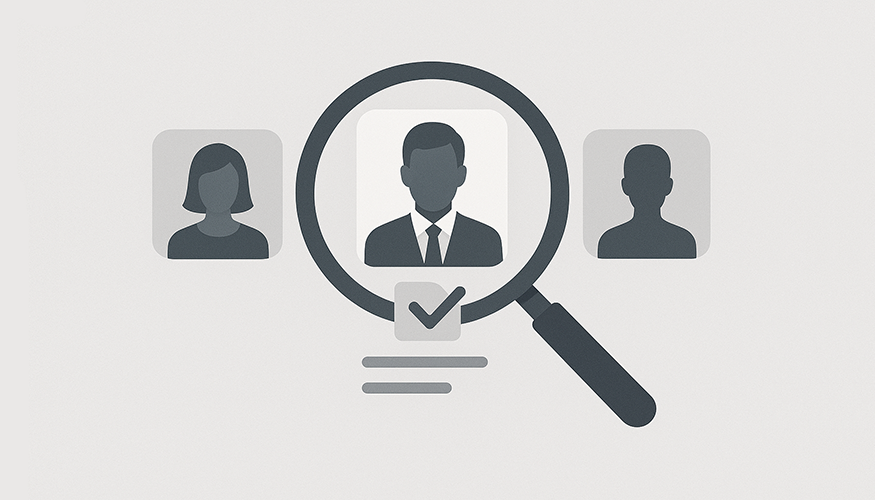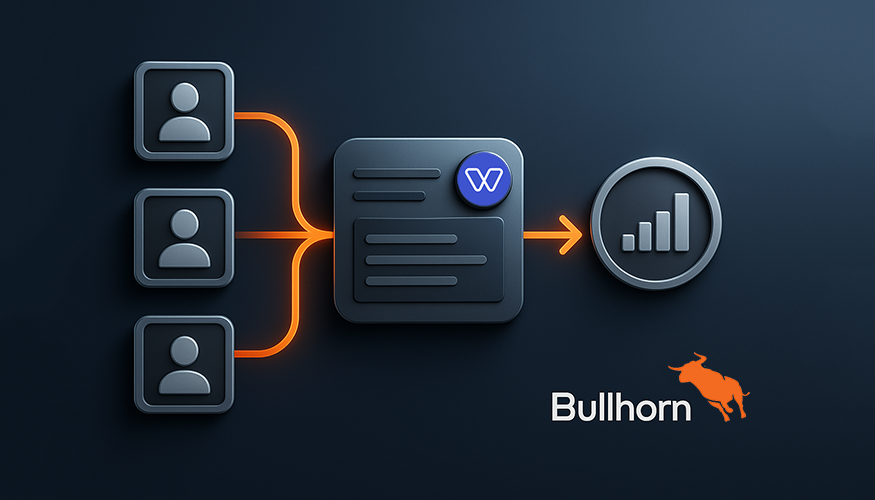Table of Contents
- Why compliance-first recruiting needs automation now
- What “recruitment compliance automation” includes (and why it matters)
- How AI makes compliance operational (and faster)
- Architecture of a compliant, auditable recruitment workflow
- Controls to ensure GDPR and regional hiring requirements in your workflows
- Practical playbook: leveraging AI for compliance without slowing hiring
- Tooling checklist (what to look for in recruitment compliance software)
- Mini-FAQ
- The outcome: speed with certainty
Try Whippy for Your Team
Experience how fast, automated communication drives growth.

Recruitment compliance automation uses AI recruitment workflows, ATS compliance features, and policy-driven controls to enforce legal compliance in recruitment—from consent & opt-in management and data protection in recruitment to a complete AI audit trail.
By orchestrating these controls inside everyday recruiter actions, teams generate audit-ready recruitment data automatically, reduce risk, and achieve time-to-hire reduction with AI while maintaining secure candidate communication.
Beyond risk reduction, this approach improves candidate experiences: messages arrive on the right channel, with the right disclosures, and a clear path through each stage—making every hiring decision more defensible and transparent.
Why compliance-first recruiting needs automation now
Regulators and enterprise clients expect provable privacy, fairness, and documentation across every hiring touchpoint. Meanwhile, recruiting runs across email, SMS, voice, and portals—each a potential control gap if handled manually. The cost of getting it wrong is more than fines; it includes lost trust, broken pipelines, and uneven candidate experiences that quietly harm brand perception and offer acceptance rates.
Compliance workflow automation closes these gaps by moving rules from slide decks into the system of record. Consent is captured before outreach and renewed when the processing purpose changes; regional policies shape copy, timing, and channel; notes and dispositions follow a consistent schema; and each action produces durable evidence in the AI audit trail. Crucially, automation doesn’t slow the pipeline: it removes rework, prevents avoidable violations, and gives recruiters a guided path that supports good hiring decision-making. With artificial intelligence (AI) layered in—policy checks, content risk flags, and smart defaults—compliance becomes an accelerator, not a brake, while systematically reducing bias in communications and evaluations.
Want to see compliant omnichannel recruiting in action? Explore Whippy’s approach to automation and unified communications↗, then request a Free Demo↗
What “recruitment compliance automation” includes (and why it matters)
1) Privacy, consent, and secure communications
Compliance begins the moment a record is created. Consent and opt-in management is collected explicitly at first touch, then renewed or re-verified when the processing purpose changes—say, from screening to talent pooling. Every message—email, SMS, or voice—is transmitted with secure communication in recruiting controls such as encryption in transit and at rest, plus role-based access to protect sensitive fields. Channel-specific policies (quiet hours, language, opt-out handling) are enforced automatically to keep outreach respectful and lawful.
Because the system centralizes interactions, recruiters don’t have to hunt for proof: logs, timestamps, policy versions, and content snapshots roll up into audit-ready recruitment data that supports fast record-keeping & audit readiness. This evidence is indispensable during client audits and RFPs, and it reassures candidates their information is handled with care—an often-overlooked driver of better candidate experiences. For Whippy’s broader security stance, See Whippy’s SOC 2 Type II compliance details↗
2) Fair, structured, and defensible evaluations
Consistency is the backbone of fairness. A structured hiring process ensures every applicant receives the same baseline of questions and information, reducing discretion where it introduces noise or risk. The platform guides teams toward a compliant interview process—with reminders that steer clear of prohibited topics—and nudges toward compliant job descriptions that avoid exclusionary or biased phrasing. This supports equal opportunity hiring and anti-discrimination objectives while giving leaders a clear, reviewable trail of how a hiring decision was reached.
Here, artificial intelligence plays a supportive role. An ai model can flag potentially sensitive language in interviewer notes, highlight missing required fields, or detect inconsistent scoring patterns—quietly reducing bias and prompting remediation before decisions are finalized. The output isn’t just compliance for its own sake; it’s a better experience for candidates and a more credible foundation for selecting the right talent.
3) Jurisdiction-aware data protection
Global teams face overlapping privacy regimes. Policy-driven data protection in recruitment enforces retention, redaction, and access rights aligned to GDPR recruiting compliance, CCPA / CPRA recruiting, and global hiring compliance. Instead of relying on memory, teams work within guardrails that automatically apply the right data handling rules for a candidate’s region and the stated processing purpose.
Sensitive steps—such as background check compliance—run with explicit sequencing (e.g., notices, cooling periods, candidate acknowledgments), and every action writes back to the candidate profile for clean record-keeping and documentation. When a regulator or enterprise client asks for a data map or lifecycle report, you can produce it quickly—showing not only what you did, but when, why, and with which policy version.
4) AI governance you can explain and prove
Adopting AI is not enough; you have to explain and prove how it behaves. AI governance in recruitment adds approvals, human-in-the-loop checkpoints, and reviewer assignments so people stay responsible for outcomes. AI transparency documentation captures which AI model or prompt version was used, who approved an action, and what alternatives were considered. AI audit reporting for recruiters then packages this into evidence an auditor—or a discerning enterprise buyer—can understand.
To support AI bias & fairness in hiring (and AI bias and fairness in hiring), the system runs tests for demographic parity and score drift, and it logs mitigations—such as standardized rubrics or question banks. These capabilities align with automated hiring tools regulation and automated compliance in recruitment trends by showing that you are leveraging AI for compliance, not replacing human judgment. The result is operational visibility that protects the business, strengthens trust with candidates, and yields more reliable hiring decision outcomes.
How AI makes compliance operational (and faster)
Modern AI-powered compliance tools sit inside your ATS and communication stack to automate compliance checks in recruitment while increasing velocity and control. This is where artificial intelligence in HR compliance stops being an abstract promise and becomes day-to-day guardrails that recruiters actually feel.
Instead of hoping people remember every rule, AI in recruitment compliance runs pre-flight checks on each action. It verifies consent & opt-in management exists before outreach, blocks messages during restricted quiet hours, and detects missing disclosures by reading the message context. The same ai tool can evaluate templates and one-off messages for phrasing that could weaken ethical recruitment standards, nudging the sender with corrective suggestions in real time.
Language and policy checks go beyond simple keyword filters. AI recruitment compliance uses AI algorithmic models to understand intent and risk—flagging potentially non-compliant wording or off-limits topics pre-send. It applies regional policies automatically, so teams ensure consistent execution across countries, brands, and franchise locations without slowing down.
Every action feeds the evidence layer. AI recruitment workflows create an immutable AI audit trail—timestamps, actor, channel, content hash/summary, policy version, and the related ATS entity. That trail is essential for record-keeping & audit readiness and for proving candidate data privacy obligations are met. Analytics then connect compliance to throughput and quality: you can demonstrate time-to-hire reduction with AI while showing zero policy exceptions, fewer manual reworks, and steadier conversion from apply → interview.
The net effect: compliance becomes default behavior. Recruiters move faster because the system prevents errors upstream, not because it ignores rules. Leaders gain visibility, auditors get transparent evidence, and candidates experience clearer, more respectful communication.
Architecture of a compliant, auditable recruitment workflow
1) Intake & Sourcing
Compliance starts at creation. Compliant job descriptions are generated or checked against inclusive language patterns and jurisdictional requirements. Channel policies (SMS consent text, email footer, opt-out instructions) are attached automatically, so source-of-truth artifacts ensure consistent execution across teams. At first touch, consent & opt-in management is captured with purpose, timestamp, and channel, then tied to the candidate record. Prominent notices and preference centers reinforce recruitment data privacy—and each acknowledgment is stored for audit-ready recruitment data. By embedding these steps into the ATS, you protect candidate data privacy from the outset.
2) Screening & interviewing
During evaluation, the platform guides a compliant interview process with standardized rubrics and structured question sets aligned to the role. Interviewers are prompted away from prohibited topics and toward ethical recruitment behaviors that focus on skills and outcomes. Behind the scenes, monitoring for AI bias & fairness in hiring runs continuously: the AI model tests score distributions and comment sentiment, surfaces anomalies, and stores explanations as AI transparency documentation. Meanwhile, automated candidate engagement (with compliance) manages content templates (location-aware, role-aware), quiet-hour rules, and regional policies across email, SMS, and voice—keeping conversations timely while respecting boundaries.
3) Decision & Background Checks
When you reach decision steps, the system orchestrates background check compliance with explicit sequences (pre-notice, authorization, cooling periods, candidate notices) and captures every step in the ATS. If an action would violate policy—e.g., proceeding without a completed disclosure—the workflow pauses and alerts the owner. One-click compliance reporting automation then assembles evidence bundles (messages, forms, timestamps, policy versions) by job, requisition, or time window for internal counsel or client audits. The combination of AI audit reporting for recruiters and structured artifacts creates a durable chain of custody for each hiring decision.
4) Offer, Onboarding, and Retention
Once an offer is accepted, onboarding automation enforces onboarding compliance: identity verification, right-to-work, policy acknowledgments, and mandated trainings—captured and versioned. Retention and redaction policies run on schedules matched to jurisdiction and purpose, reinforcing data protection in recruitment with minimal manual effort. Every artifact (e-sign envelope, completion timestamp, system user) lands in the candidate profile for full record-keeping and documentation. Throughout, ATS compliance features centralize actions and maintain secure candidate communication, so any recruitment audit can be answered quickly with a single export.
Outcome: a living system that bakes compliance into the workflow itself. Recruiters operate faster, candidates receive consistent, respectful treatment, and leadership can prove both performance and conformance—without juggling spreadsheets and email trails.
Controls to ensure GDPR and regional hiring requirements in your workflows
To reliably meet GDPR recruiting compliance, CCPA / CPRA recruiting, and other regional rules—while preserving speed—apply the following system controls:
Lawful basis & purpose limitation
Each processing activity is labeled with a lawful basis (e.g., contract, consent, legitimate interest) and a specific purpose. The platform enforces purpose changes with re-consent prompts, so data isn’t reused in ways that violate legal compliance in recruitment. This protects candidate data privacy and supports ethical recruitment practices.
Candidate rights automation
Data subject requests (access, correction, deletion, portability) are initiated within the ATS and fulfilled with policy-driven workflows. The AI tool can auto-locate related data across channels (emails, SMS, voice transcripts) and generate a secure export package—closing the loop with a timestamped AI audit trail entry.
Fair evaluation & bias monitoring
Role-based permissions protect sensitive fields. Scoring is anchored in rubrics to ensure consistent decisions. Continuous tests for AI bias & fairness in hiring run on model outputs and human notes; mitigations and reviewer checks are logged as AI transparency documentation. This blends artificial intelligence in hr compliance with human oversight to keep AI algorithmic behavior accountable.
Standardized dispositions & notes
Harmonized status codes and structured notes make outcomes legible and comparable across roles, sites, and brands. This improves record-keeping & audit readiness and clarifies the rationale behind each hiring decision.
Logging & exports
Everything—from consent to offer—is logged with policy versioning, user IDs, and channel metadata. One-click AI audit reporting for recruiters produces audit-ready recruitment data by requisition, date range, or location, so audits and client questionnaires are resolved quickly and confidently.
These controls create a closed loop where policy drives the workflow, AI recruitment workflows enforce the rules, and evidence is generated automatically—so you can move faster without compromising compliance or candidate experiences.
Practical playbook: leveraging AI for compliance without slowing hiring
How AI ensures compliant recruiting processes:
Start by embedding pre-send checks that run before any message is delivered. These checks confirm consent & opt-in management, detect missing disclosures, validate interview compliance prompts, and apply jurisdiction rules (quiet hours, language, and data transfer constraints) automatically. Role-aware approvals ensure the right reviewer signs off on sensitive steps (e.g., adverse-action notices or cross-border transfers). In regions governed by the general data protection regulation (the data protection regulation GDPR), the system enforces lawful basis selection and purpose limitation before a single record is processed. In the United States, policies reflect sector and state requirements (e.g., CPRA, FCRA sequences), reducing legal risk in recruiting while keeping recruiters moving.
Automate compliance checks in recruitment:
Translate policy into machine-enforced logic. Templates and guardrails standardize wording for outreach, interview invitations, and post-meeting follow-ups, while exception queues isolate edge cases for human review. AI recruiting tools and generative AI assist by suggesting compliant language, highlighting risky phrases, and providing just-in-time guidance to recruiters. This is where staffing compliance automation shines: every branch, brand, or location executes the same policy with the same timing—no “policy drift,” even during peak req loads.
Generate audit-ready recruitment data automatically:
Every step—collection, outreach, evaluation, decision, and onboarding—produces durable evidence. Unified audit trails (and the AI audit trail subset) log user, timestamp, channel, policy version, content hash/summary, and ATS linkages. These records are searchable and exportable by date range, requisition, recruiter, or candidate so HR teams can satisfy internal audits, client requests, or regulator inquiries without manual reconstruction. For job seekers, this transparent handling supports trust and better candidate experiences.
Reduce compliance risk with AI automation:
When policy is code, violations are stopped upstream. Automated checks reduce manual error, consistent templates prevent off-script messages, and jurisdiction rules avoid time-window and content violations. Continuous monitoring ties exceptions to metrics, so you can prove risk reduction with trend charts rather than anecdotes. Built-in risk assessments (e.g., DPIA/PIA prompts in GDPR contexts) ensure high-risk workflows are reviewed before launch, further reducing the risk of downstream incidents.
Build a compliant, auditable recruitment workflow:
Standardize the sequence from intake to onboarding: compliant job descriptions → structured screening → interview compliance → adjudicated background checks → compliant offer and onboarding packets. Document every decision with rubrics and notes, and keep governed models in scope—store model version, prompt configuration, reviewer approvals, and mitigation steps. Treat this as a living recruitment compliance guide encoded in your platform. Because the system is continuously improving, new rules and lessons learned propagate instantly to every team and market.
This is HR compliance automation designed for reality: fast, multi-channel recruiting with clear proof at every step—no binders, no guesswork, no bottlenecks.
Tooling checklist (what to look for in recruitment compliance software)
☐ Policy engine & rules
Jurisdiction logic (EU general data protection regulation / data protection regulation GDPR, UK, United States states), quiet hours, copy guardrails, and communication security in recruiting. Look for policy versioning, simulators (“what happens if we send this at 10pm Berlin time?”), and rule conflict resolution.
☐ Consent
End-to-end consent & opt-in management with purpose tags, renewal prompts, and evidentiary logs. Must support granular preferences per channel and campaign, plus secure storage to reassure job seekers and auditors.
☐ Unified logging
Cross-channel logging with complete audit trails and an AI audit trail tied to candidate records in the ATS. Include policy versions, content hashes, and reviewer approvals so evidence stands up during audits or client questionnaires.
☐ Bias controls
Built-in tests for AI bias & fairness in hiring with explainers for reviewers. Require human-in-the-loop escalation when signal indicates drift. Store mitigations and outcomes as part of AI transparency documentation.
☐ Exports
One-click compliance reporting automation to assemble evidence bundles by job, recruiter, date range, or location. Include attachments (templates used, consent artifacts, background-check steps) for complete case files.
☐ Integrations
Strong API, SSO, and DLP hooks; deep ATS compliance features to centralize recruitment automation. Native connectors for email/SMS/voice ensure policy is enforced across all channels where recruiters actually work.
☐ Scalability
Ability to handle seasonal spikes without dropping policy checks. Maintain compliant hiring workflows and secure communication in recruiting at volume—critical for agencies and franchise networks running thousands of concurrent reqs.
☐ Security posture
Encryption in transit/at rest, incident response, and third-party attestations (e.g., SOC 2 Type II↗). Clear data residency controls to support global hiring compliance and reduce cross-border transfer risk.
☐ AI governance
Model registry (versions, datasets), approval workflows for high-stakes automations, and red-teaming/testing support for generative AI features. The goal is explainable, governable AI algorithmic behavior that auditors can follow.
Mini-FAQ
Q: What is automated recruitment compliance?
A: It’s recruitment compliance automation—using rules, AI-powered compliance tools, and ATS compliance features to enforce recruitment laws, privacy, fairness, and record-keeping & audit readiness across the lifecycle. The system encodes your recruitment compliance guide into everyday actions, reducing error and legal risk in recruiting.
Q: How does automation improve audit readiness?
A: Automation centralizes record-keeping and documentation so every action is logged, searchable, and exportable as audit-ready recruitment data—including AI transparency documentation and end-to-end audit trails. Evidence bundles that once took days now take minutes.
Q: Can automation help with global hiring compliance?
A: Yes. Policy-driven workflows adapt by region—general data protection regulation in the EU, CPRA/FCRA in the United States—while maintaining speed and secure candidate communication. The platform localizes consent text, retention rules, and disclosure timing automatically.
The outcome: speed with certainty
With compliance automation for recruiters, you don’t have to choose between throughput and rigor. Teams uphold recruitment data privacy, meet GDPR recruiting compliance and CCPA / CPRA recruiting obligations, and benefit from time-to-hire reduction with AI—all inside a governed system that stands up to scrutiny.
Ready to operationalize compliance and move faster?
Request a Free Demo↗ and see how Whippy implements recruitment compliance software, automated recruitment compliance, and compliance workflow automation that scales with your team.
Table of Contents
Table of Contents
- Why compliance-first recruiting needs automation now
- What “recruitment compliance automation” includes (and why it matters)
- How AI makes compliance operational (and faster)
- Architecture of a compliant, auditable recruitment workflow
- Controls to ensure GDPR and regional hiring requirements in your workflows
- Practical playbook: leveraging AI for compliance without slowing hiring
- Tooling checklist (what to look for in recruitment compliance software)
- Mini-FAQ
- The outcome: speed with certainty
Try Whippy for Your Team
Experience how fast, automated communication drives growth.
Related Articles

AI Agent for Recruiting: Hire Faster

Enterprise Staffing Solutions with AI Automation

AI Recruiting Agents Are the Future of High-Volume Hiring

Automate Candidate Screening with AI Tools

AI Agents in Hiring for ATS Users
